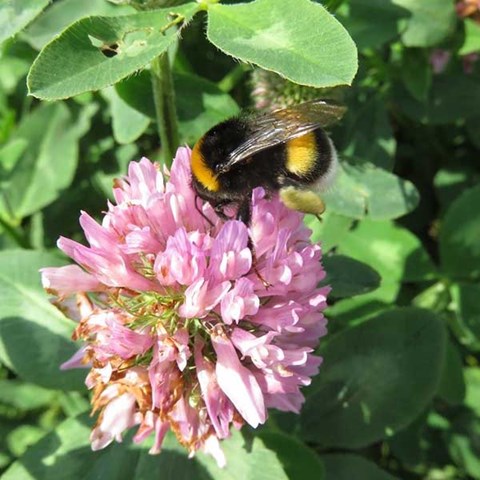Contact
Department of Ecology, NJ, Agricultural Entomology Unit
Åsa Berggren, professor
Department of Ecology, SLU
asa.berggren@slu.se +46 (0)18-672344

Intensification of agriculture and the associated loss of habitat diversity is a key driver of global declines of arthropod biodiversity. Insects utilize different habitats to meet their resource requirements throughout life and their conservation requires a landscape-scale approach. Information on the impacts of land-use on insect diversity and abundances is essential to manage insect biodiversity. In our research we investigate how local and landscape scale management affect insects in agricultural systems.
Pollinators are an important insect group that is currently suffering worldwide declines linked to how we use our agricultural landscapes. One major change that has occurred in agricultural landscapes is that there are fewer flowering plants for insects. The amount of flowers not only affects bees, but also the persistence of other wild pollinating insects. An equally important factor is when these flowers are available for the insects. In our research we investigate both availability and timing of food resources for pollinators. We are interested in several aspects of the pollinator communities; their diversity and abundance and rare species, and how the management of flowering resources affects these communities. We also study how flowers in the landscape affect the interaction between pollinators and plants and how management can stabilise or destabilise these systems.
In conservation management, preference is often given to conserving large, highly-connected areas over small isolated patches. However, small habitats have been shown to be important biodiversity refuges in managed landscapes. Field islands are remnants of natural habitat patches surrounded by cropland. While their island-like position in a species-poor crop field makes them potentially strategic habitats for biodiversity conservation, they have not received much attention in ecological studies. We are studying systems of small field islands and how they affect insect diversity in the landscapes. One of our main discoveries is that they include a large proportion of the regional grasshopper species pool in spite of their size. This indicates that these small habitats can have a disproportional significance also for other insects in the agricultural landscape. Our research examines the roles of these and other small habitats for insects to find ways of management that increase the likelihood of insect persistence in these landscapes.
We do not know much about how the amount of flowering resources affects the health of pollinators. The amount of resources and their location has the potential to affect how diseases are spread. An increased understanding of how our land use affects pathogen spread and its prevalence will advance the conservation of bumblebees in agricultural landscapes and improve our knowledge of how pollinators’ pathogens spread. Our research focuses on interactions between bumblebees, landscape structures and food resources and the pathogens likely to be relevant for their health.
Åsa Berggren, professor
Department of Ecology, SLU
asa.berggren@slu.se +46 (0)18-672344